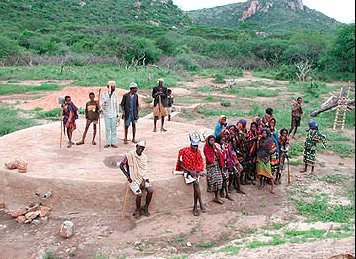
Horn of Africa Drought

Analysts say Climate, Poverty Exacerbate Drought in Horn of Africa
By Angel Tabe Washington,DC04 April 2006
Humanitarian agencies say the drought situation in East Africa is not getting better. They say droughts are becoming more frequent, damaging food crops and putting millions of people at risk.
Valerie Julliand is the head of the UN Office for the Coordination of Humanitarian Affairs, OCHA, for central and east Africa. English to Africa reporter Angel Tabe asked about the severity of the drought: “The three most affected are Ethiopia, Somalia and Kenya and, to a lesser extent but still in a severe manner, Burundi and Djibouti. The drought actually goes beyond the Horn of Africa, because some countries of the Great Lakes region, like Tanzania and Burundi, are also affected.”
Julliand says the region is arid in nature, underdeveloped, with a high poverty rate, and generally marginalized. There is also very little education and health care, and there are a number of conflicts. “What caused the drought is lack of development, escalating poverty, environmental degradation, population pressure, and sporadic and tragic conflicts.”
She says the main impact of the drought is a lack of water, which is essential for humans as well as animals. “And since the affected populations are pastoralists…if they lose their animals, they lose their lives…. People go to other places to find pastures, and these movements create an increased risk of resource-based conflicts.”
Julliand notes that very little can be done about the climate, especially with the drought cycle changing, not for the better. For the populations’ recovery, she recommends that alongside immediate response measures, long-term measures, which do not disrupt their pastoral lives, be implemented. “We have to initiate immediately longer-term recovery to help these people live where they are. We just can’t impose that they go some place else and become poor in urban centers. This drought comes on the heels of another one. The cycle that used to be every ten years is now every two years. So the people have no time to recover. What has to be initiated is a whole program of education.”
Asked whether drought resistant crops could be cultivated and commercialized to provide alternative income, Julliand said that could be part of recovery efforts, but she prefers more emphasis on the cattle culture. “When we talk about pastoralists, they‘re people on the move all the time. Their wealth is not in crops. We have to consider also that some types of crops need a lot of water to be eaten…. What is important is that both long- and short-term approaches be done jointly, because while we save lives, we can at the same time help them build their resilience so that if there is another shock, they won’t be exhausted, and then they can be sustainable.”